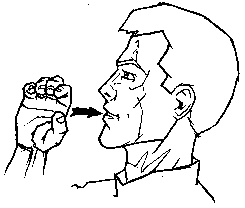CoffeeFiend
New Member
- Joined
- Dec 4, 2013
- Messages
- 21
- Reaction score
- 0
I’m having problems differentiating “English” signs from ones that are “Pure ASL”. As a student, I’m not seeing much difference between the two and my linguistics professor is confusing on the issue. (He’s Deaf.)
According to him, “Juice” signed with a “j” twisting at the mouth is “English” but the signs “duty”, “doctor”( with a d, not an m), “chocolate”, “wine”, “tan”, “church”, and “toilet” aren’t.
From my perspective, all of the above are initialized. All of these signs incorporate the first letter of the word they represent into the sign itself. I have signed all of the above in class, except juice. He chewed a girl out for signing that and firmly told her to fingerspell the word or get out of class.
Is there any way to tell what makes a sign “English” by watching/looking it up or is it purely based on the origin of the sign itself?
According to him, “Juice” signed with a “j” twisting at the mouth is “English” but the signs “duty”, “doctor”( with a d, not an m), “chocolate”, “wine”, “tan”, “church”, and “toilet” aren’t.
From my perspective, all of the above are initialized. All of these signs incorporate the first letter of the word they represent into the sign itself. I have signed all of the above in class, except juice. He chewed a girl out for signing that and firmly told her to fingerspell the word or get out of class.
Is there any way to tell what makes a sign “English” by watching/looking it up or is it purely based on the origin of the sign itself?



